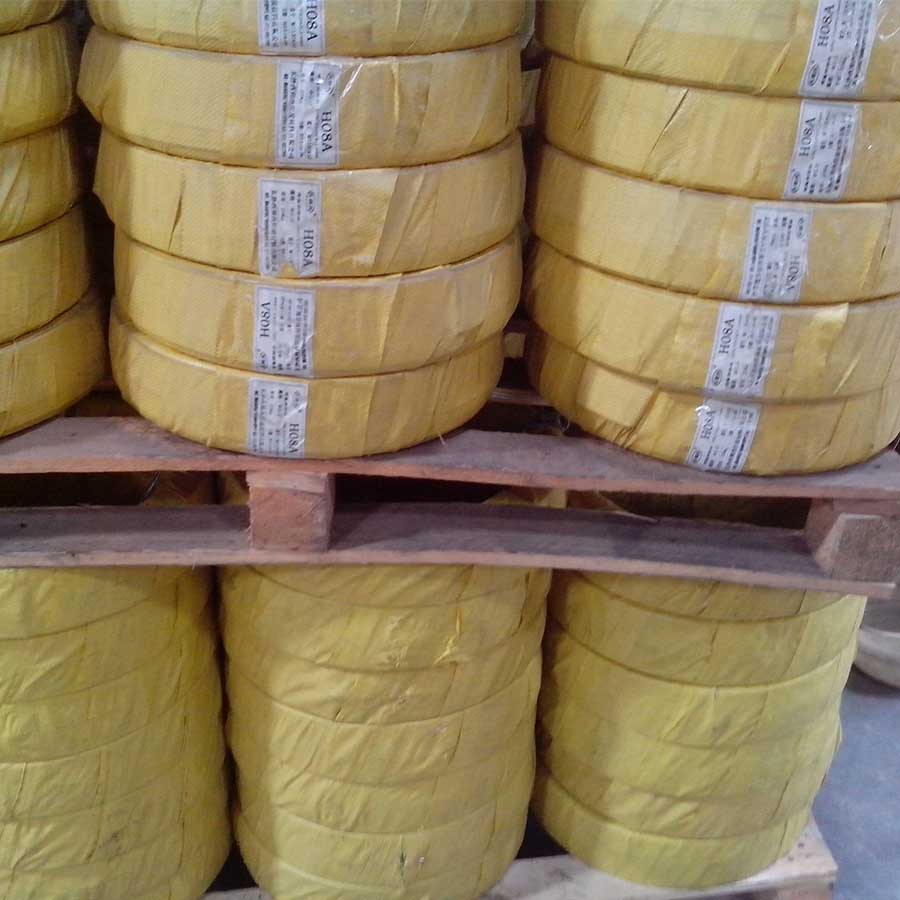ac stick welding
Understanding AC Stick Welding Techniques and Applications
AC (Alternating Current) stick welding, also known as shielded metal arc welding (SMAW), is a versatile and widely used welding process in various industries. This method utilizes an electric current to create an arc between a coated electrode and the workpiece, melting the electrode and the base metal to form a strong joint. In this article, we will explore the principles, advantages, techniques, and applications of AC stick welding.
Principles of AC Stick Welding
AC stick welding operates on the fundamental principle of creating an electric arc between the electrode and the workpiece. In this process, the electrode, which is coated with a flux material, is connected to one terminal of a welding machine, while the workpiece is connected to the opposite terminal. When the electrode tips contact the workpiece, a circuit is completed, generating an electrical arc. This arc produces intense heat, enough to melt both the electrode and the base metal.
One of the key advantages of using AC welding is that it allows for the use of various materials, including ferrous and non-ferrous metals. AC is particularly effective for welding thick metals and works well in outdoor and windy environments where the presence of moving air may disrupt the stability of the welding arc.
Advantages of AC Stick Welding
AC stick welding has several advantages that make it a popular choice among welders. First and foremost, its simplicity is a significant benefit the equipment required is relatively affordable and easy to set up. This makes AC stick welding an excellent option for both amateur and professional welders, particularly in developing countries.
Another crucial advantage is its ability to perform well in different positions. Unlike other welding methods such as MIG (Metal Inert Gas) or TIG (Tungsten Inert Gas), stick welding does not require shielding gas, which can be a logistical challenge in some situations. The flux coating on the electrode produces a shielding gas when heated, protecting the molten weld pool from contamination. This feature allows AC stick welding to be used effectively in overhead, vertical, and horizontal positions.
Furthermore, stick welding exhibits excellent penetration into the base metal, allowing for deep welds that are essential in structural applications. This deep penetration is crucial when joining thick materials, ensuring a strong and durable weld that can withstand various stresses.
ac stick welding

Techniques in AC Stick Welding
Successful AC stick welding requires the mastery of several techniques. One of the most important aspects is the selection of the appropriate electrode type and size. Different electrodes are designed for specific materials and thicknesses, and selecting the right one can make a significant difference in the quality of the final weld.
Welders must also pay careful attention to their travel speed and angle while welding. A consistent travel speed allows for even bead formation and helps prevent defects such as undercutting or lack of fusion. The angle at which the electrode is held also influences the quality of the weld—typically, a slight drag angle is favored to ensure optimal arc stability and penetration.
Moreover, maintaining a steady hand and consistent arc length is vital for producing high-quality welds. Too long an arc can lead to excessive spatter and weak welds, while too short an arc may extinguish the weld and create issues with bond integrity.
Applications of AC Stick Welding
Due to its versatility and effectiveness, AC stick welding finds application across several industries. It is commonly used in construction, manufacturing, automotive, and even for repairs in maintenance shops. The robustness of the joints produced makes it suitable for fabricating heavy machinery, pipelines, and large structural components.
In addition, amateur welders often favor AC stick welding for home projects and repairs due to its simplicity and low-cost setup. Whether it's constructing a metal fence, repairing machinery, or working on artistic metal sculptures, AC stick welding continues to be a favored technique.
Conclusion
In summary, AC stick welding is an essential technique within the welding landscape, characterized by its simplicity, flexibility, and effectiveness in various applications. The ability to weld various metals with robust penetration makes it a preferred choice for many welders. As technology evolves and new materials emerge, AC stick welding remains a crucial skill that continues to serve both professionals and hobbyists alike. Whether in a professional setting or for personal projects, mastering AC stick welding can unlock endless possibilities in metal fabrication.
-
Best MIG Welding No Gas Flux Core Solution – Easy, Portable & Clean WeldingNewsJul.08,2025
-
7018 Welding Rod 3/16 - High Strength, Low Hydrogen Electrodes Wholesale 3/32 Welding Rod 7018 Suppliers & China 7018 AC Welding Rod FactoryNewsJul.08,2025
-
High Quality MIG Aluminium Welding Wire - Wholesale Factory Prices from China SuppliersNewsJul.07,2025
-
High-Quality Gasless Aluminum Welding Wire China Gasless Aluminum MIG Wire SupplierNewsJul.07,2025
-
High Quality Ordinary Welding Rod for Pipes – Reliable China Welding Rod 7016 SupplierNewsJul.06,2025
-
Welding Wire 0.9 mm ER70S-6 Supplier Wholesale Manufacturers & FactoriesNewsJul.06,2025


